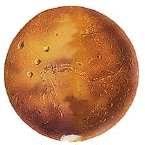|
I've got three main projects and lots of little utilities that tie them together. They are River2, Radio2 and World Outline. River2 and Radio2 are at 1.0 level. Totally functional, polished UIs, but they're still being worked on. There will be new major versions. World Outline is rock and roll. But it's coming out soooo nice. I love this product like I loved outliners in the 80s and blogging tools in the 90s and 00s.
So here's an example of what a code object looks like now. As you might imagine, to expand something click the blue wedge. Text in italics are comments. One of the cool things about programming in an outliner is that the comments collapse up to a single line. So there's no penalty for explaining what's going on. As a result, some of the scripts in our world are really blogs! Here's an example, tcp.httpClient. It started out in 1998 as a utility to replace code that was being replicated all over the place. Over time we realized that this was a pretty central piece of code, and invested in it. And from time to time it needed a new feature or a new optional parameter. Naturally we documented the changes in comments at the top of the script. And because we love CSS you can control the look of code objects by editing the template. Here's the default template for code objects in the world outline. But I imagine that these templates will be traded like themes in Manila or templates in Tumblr. I love investing in template languages because it's where geeks and designers meet. Power meets power. (The template is an outline, so you should open it in an outliner that understands OPML.) And all this has Bootstrap baked in, and it surfaces at the top level. When this is done, I think it'll be the easiest and most powerful Bootstrap prototyping and design environment in addition to all the other stuff it does. Just wanted to mark this milestone here.... |
